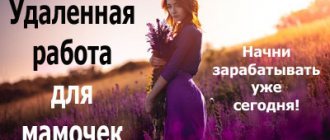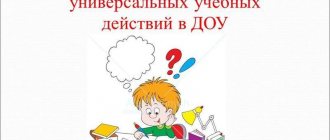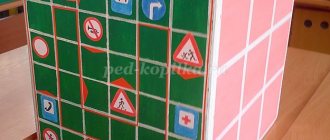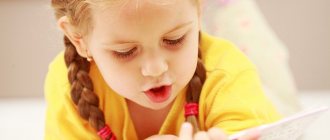Sports exercises for preschoolers
Ministry of Education and Science of the Russian Federation
Federal Agency of Education State Educational Institution of Higher Professional Education "Udmurt State University"
Pedagogical Faculty of Physical Culture
Essay
Topic: SPORTS EXERCISES FOR PRESCHOOL CHILDREN
Completed:
2nd year student
Groups O-033100-21
Bogatyrev I.V.
INTRODUCTION. CHARACTERISTICS OF SPORTS EXERCISES
Sports exercises include skiing, skating, sledding, cycling, scootering, sports scooter and swimming. Sports exercises help strengthen the main muscle groups, develop the skeletal, cardiovascular, respiratory, and nervous systems. They develop psychophysical qualities (dexterity, speed, endurance, etc.), and also form coordination of movements, rhythm, spatial orientation, and balance functions.
During outdoor activities, at different air temperatures in appropriate clothing, the child’s body’s defenses and metabolic processes in it increase.
In addition, sports activities contribute to children’s knowledge of natural phenomena; they acquire concepts about the properties of snow, water, ice, sliding, braking; bicycle device, etc. The child’s vocabulary significantly expands, moral qualities develop: comradely mutual assistance, discipline, coordination of actions in a team, courage, endurance, determination and other personality traits.
By caring for physical education equipment, the child acquires labor skills and learns to be thrifty and neat.
SKI WALKING TRAINING
In a preschool educational institution, children begin to learn how to ski from the second junior group, and a child can also learn this at an early age with the help of parents.
The teacher talks at parent meetings about the selection of skis and poles, how to fasten skis, the requirements for clothing and shoes, how to store and care for skis. Parents are given brief information about the technique and methods of moving on skis, and the methodology for teaching how to move on skis is revealed, so that adults can be an example for the child.
A child's training in skiing is organized in a preschool educational institution in the morning - after classes, and in the evening - after afternoon tea, during walks. Classes are conducted individually, in subgroups, with the whole group. The teacher preliminarily plans classes and a system of preparation for them. He specifies the content, dosage of exercises, and determines teaching methods.
Then the teacher conducts a conversation with the children, during which he talks in an accessible form about the meaning of the activities, about clothes, shoes for them, the rules for storing ski equipment and caring for it. The child is taught to carry skis: on the shoulder, under the arm, in the hand; putting on and taking off skis.
Learning to move on skis is carried out in the following sequence: first they teach stepping and sliding steps without poles, then turns in place (around the backs and toes) and in motion (“stepping”, “plough”, “semi-plough”), braking, climbing a slide (in a normal step, “herringbone”, “half-herringbone”, “ladder”) and descent from it (“ladder”, in a low, medium and high stance), alternating two-step and simultaneous stepless walking with sticks.
First, children move on skis without poles. This helps to develop coordination of movements of the arms and legs, and the development of balance. Untimely use of sticks makes it difficult to move and encourages the child to “hang” on them, which can lead to injury.
Learning to move on skis occurs in stages using a demonstration of a movement pattern and an explanation of the sequence of motor actions. Examining drawings and filmstrips that give an idea of proper skiing has an excellent educational effect.
Skiing skills are reinforced in outdoor games “Catch-up”, “Wider step”, “Counter relay race”, “Don’t hit me”, etc.
Ski lessons are conducted with a gradual increase in time from 15 to 40 minutes. After all the children in the group have learned to ski well, you can arrange walks for them outside the preschool site - in the park, in the forest, at the stadium. The duration of walks is from 30 to 60 minutes. Children of senior preschool age are also able to participate in tourist walks. It is important to involve parents in participating in them, who can also consolidate the skills acquired by their children on weekends.
SKATING LEARNING
Ice skating is one of the most important forms of sports exercise.
It has a cyclical nature, i.e. repeated repetition of the same movements in the same sequence and a large amplitude of these movements.
Ice skating is one of the natural physical exercises, similar in coordination to the movements of walking and running. Therefore, you can easily master these exercises, and they are accessible to children with different physical fitness.
Ice skating, a great exercise for children and adults, is also one of our favorite outdoor activities. Systematic skating lessons have a positive effect on the child’s body and are of great importance for health, mental, moral, aesthetic and labor education.
While skating, you can move quickly in the fresh air. This improves health, hardens the body, develops speed, strength, agility and endurance. The child gains vigor and lightness when moving quickly, and it is pleasant for him to breathe cold, fresh air.
Cold, clean air from the environment has a beneficial effect on the child’s body and strengthens it. Hardening is the most important health measure that prevents diseases. In children, significant reflex stimulation of growth and development occurs, metabolism increases, and the body's resistance to various negative environmental influences increases, be it changes in weather or atmospheric pressure. This promotes rapid adaptation to changes in the external environment without any disruption to the functional activity of the body.
T.I. Osokina emphasizes that systematic hardening is important from an early age as an effective remedy against hypothermia. A child's body is more easily susceptible to hypothermia than an adult's, because 80-90% of all heat loss in children occurs through the skin. During skating, thermoregulatory processes improve. Children enjoy skating and become strong, agile and courageous. Children develop coordination of movements of arms and legs, strengthen the muscles of the back and abdomen, and develop posture.
Ice skating helps strengthen the muscular and osseous-ligamentous apparatus of the lower extremities. According to L.N. Pustynnikova, in children the arch of the foot is strengthened due to the constant alternation of tension and relaxation of the leg muscles when changing between single-support and double-support sliding. She notes that while skating, the stability of the vestibular apparatus increases, which ensures the maintenance of balance and allows children to “easily and freely maneuver on the ice and perform various figures.” As a result, the respiratory organs and respiratory muscles develop, since breathing is consistent with movements. Increased functioning of the respiratory apparatus ensures good functioning of the child’s body.
Skating is useful for developing fine coordination and rhythmic movements. It promotes the development of various psychophysical qualities: speed, endurance, strength and agility.
Ice skating leads to the establishment of a more perfect interaction between various parts of the central nervous system and increases the performance of the child’s body. F. Kiryanova considers it important that childhood and the need to run, jump, and climb are inseparable from each other. It is necessary to regulate this movement activity, especially in boys. One way to regulate activity is through ice skating. It also develops interest in other sports games. For example, if children play hockey, they become interested in badminton and hoops; if figure skating - to ballet, gymnastics.
While skating, spatial orientation develops. Children learn to navigate and manage their actions more correctly and economically on a large area of the skating rink among a group of skaters. They learn to evaluate the distance of one object from others and from themselves, and receive initial information about the speed of movement. This helps children quickly respond to changing conditions while skating and broadens their horizons.
L.N. Pustynnikova believes that the skills acquired in skating classes are used by children in
Independent activities and games. Children get used to discipline and neatness. They must comply with certain requirements: quickly get ready for class, help other children lace up their shoes and enter the skating rink in an orderly manner, and after class, clean their skates and carefully put them in a bag. ' From the teacher they receive initial information about skating techniques: for example, how to take the starting position, how to change the direction of movement, increase speed and evaluate the movement of their comrades.
While skating on ice, children develop valuable personal character traits. They independently make various decisions, show resourcefulness, courage, and initiative. They develop team behavior skills (for example, children at the skating rink often have to help each other when lacing their boots when a novice speed skater gets on the ice). Kh. Zamaletdinova emphasizes that for moral support and the development of strong-willed qualities, it is better if parents also engage in skating. Children like it and they try to imitate adults.
t This sport forces you to think about your behavior and promotes hard work and camaraderie, for example, if it snows, children can clean the skating rink together or, in clear weather, sweep and straighten the shafts. Children get a great impression from the surrounding nature and the variety of movements themselves. This causes a powerful stream of irritations entering the central nervous system from all sensory organs. Children develop the ability to appreciate the beauty in nature.
According to A. Sadovskaya, as a result of skating, children can develop their powers of observation. For example, on a frosty day, the teacher will draw the children’s attention to the fact that the skating rink is smooth, transparent, and the skates make a loud noise cutting the ice path. In snowy weather, it is covered with an even thin layer of snow, the snow sparkles and creaks underfoot. And in the spring the skating rink becomes loose, making it more difficult to skate on. In this regard, the children's vocabulary is enriched, new words and expressions appear in their vocabulary, such as: “the ice sparkles, cracks, rings... the snow is spinning,” etc. Ice skating has a beneficial effect on aesthetic education, which is facilitated by music, dancing and rhythmic gymnastics that accompany figure skating classes.
The positive value of learning to skate is the constant enrichment of motor experience, the formation in the child of the correct skills of natural vital movements. Having developed skills allows you to creatively use skills depending on the circumstances.






